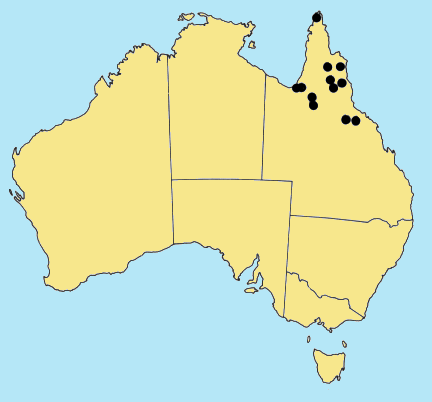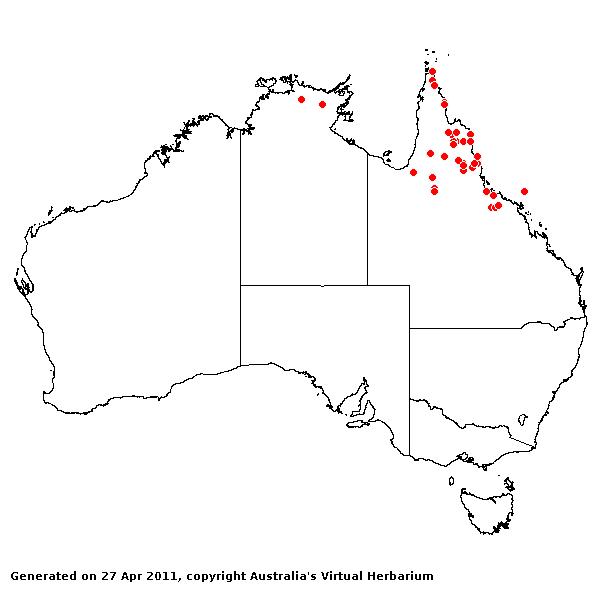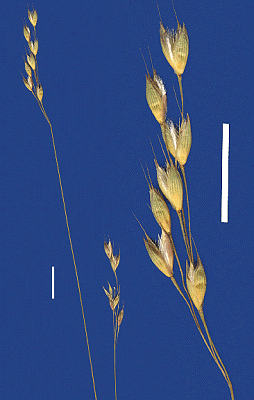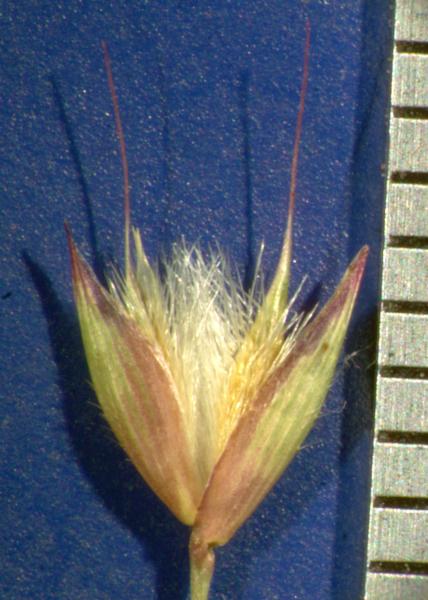Eriachne humilis Hartley. J. Linn.
Soc., Bot. 52: 343 (1942).
Classification. (GPWG 2001) : Subfamily
Micrairoideae. Eriachneae.
Type of Basionym or
Protologue Information: Australia, Thursday Is.: Bailey (BRI holo).
Key references
(books and floras): [2002] D.Sharp & B.K.Simon, AusGrass, Grasses of
Australia.
Habit. Annual
or ephemeral. Culms erect or geniculately ascending, 2.5–46 cm tall, 2–3
-noded. Mid-culm nodes glabrous or pubescent or bearded. Lateral branches
branched. Leaf-sheaths hairy. Ligule a fringe of hairs. Leaf-blades filiform,
5(–20) cm long, 0.5–1 mm wide. Leaf-blade surface indumented.
Inflorescence.
Inflorescence compound, a panicle. Panicle ovate, 1–3(–6) cm long, 1–3 cm wide.
Spikelets.
Spikelets pedicelled. Fertile spikelets 2-flowered, both fertile, comprising 2
fertile floret(s), without rachilla extension, ovate, laterally compressed, 4
mm long.
Glumes.
Glumes similar, thinner than fertile lemma. Lower glume elliptic or obovate,
membranous, without keels, 7–11 -nerved. Lower glume surface glabrous or indumented.
Upper glume elliptic or obovate, 4–6 mm long, membranous, without keels, 7–11
-nerved. Upper glume surface smooth or tuberculate, glabrous or indumented.
Florets.
Fertile lemma 3.3–5 mm long, without keel, 5–7 -nerved. Lemma surface
indumented. Lemma apex awned, 1 -awned. Median (principal) awn 1–3.5 mm long
overall. Palea apex entire or dentate. Grain 1.8–2.6 mm long.
Continental
Distribution: Australasia.
Australian
Distribution: Queensland.
Queensland:
Burke, Cook, North Kennedy.
Notes.
Distinguishing characters include the basal filiform hispid leaves, and sparse
loose exserted panicles. The floret with appressed, dissimilar (in indumentum)
lemma and palea is as long as the glumes, the lemmas are awned and partly
nerved, the callus is subacute and entirely bearded, and the caryopsis is
strongly compressed. The species has larger spikelets than the allied E.
filiformis and E. agrostidea; also larger panicles than the former
species, and shorter awns than the latter.
Native.
Qld N of 21ºS.; also in Papua New Guinea and Irian Barat. Stony, skeletal
slopes on sandstone, saltpans, lateritic plains, and sandy soils on seepage
slopes and waterhole banks. Flowers and fruits Mar.-May (autumn), extending to
July (winter) in Australia.




